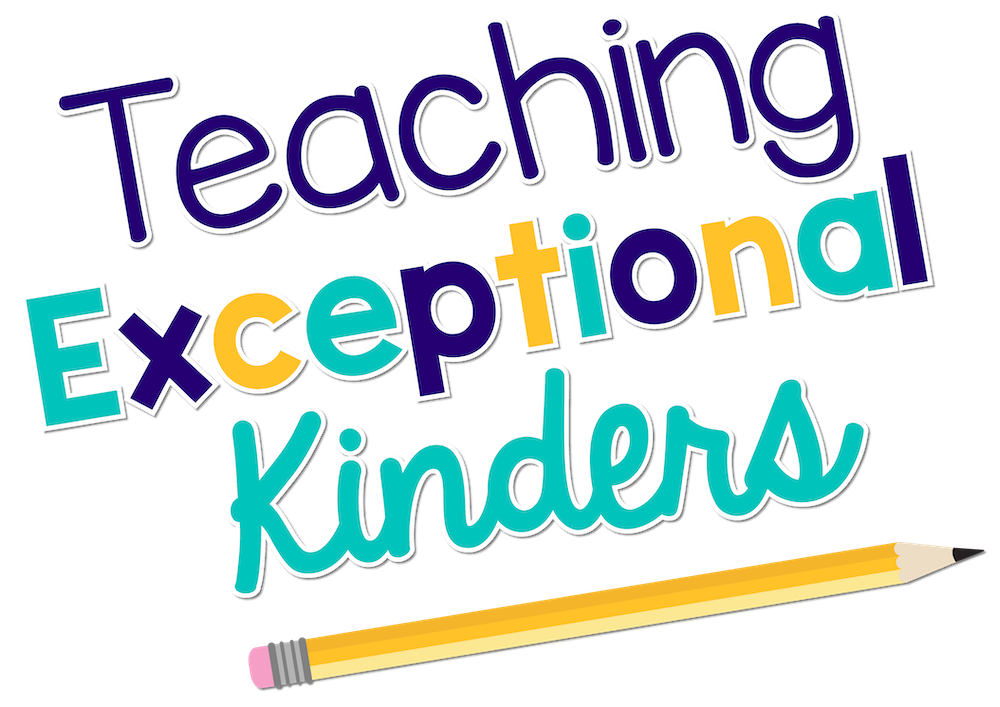Helpful Tips for Kindergarten Screening
As the weather warms up, our minds often dream of summer, but ultimately wander to next school year. An important part of planning for the upcoming school year is kindergarten registration and screening. Sometimes it can be hard to prioritize what you really need to know about these incoming students. It can be even harder to get them in the door for the assessment! In this post, I’m going to share my best tips for kindergarten screening and assessment.
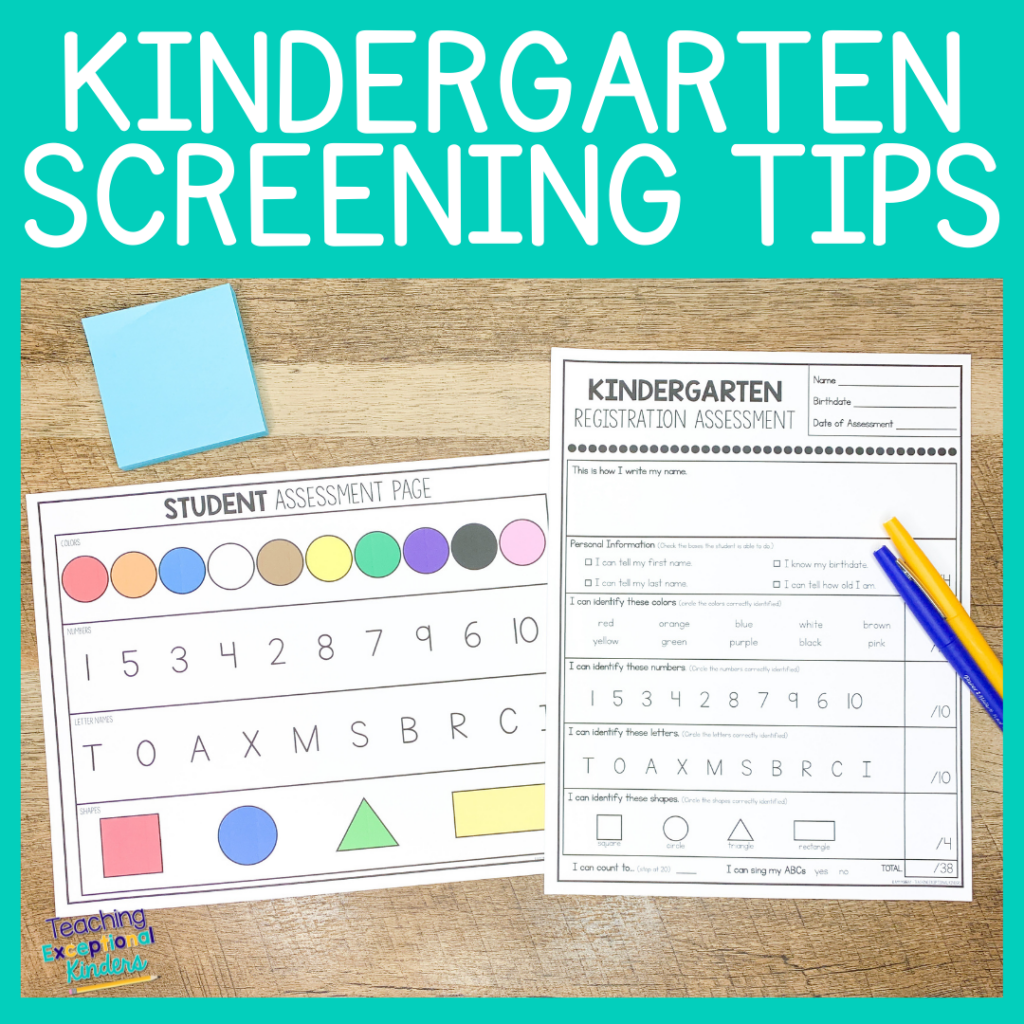
What to Include in a Kindergarten Readiness Assessment
The goal of screening is to see how well your future students are prepared to participate in your classroom. That means the content of a kindergarten screening should be based on your district requirements and curriculum.
However, there is a common set of skills typically included in a kindergarten readiness assessment:
- Provide basic information, such as name and age
- Count by rote
- Recite or sing the alphabet
- Identify colors
- Name basic shapes
- Identify printed numbers
- Identify letters
- Write name
There is so much more that you can learn about an incoming kindergartner from a readiness assessment! It’s not just about whether or not students can name a triangle. For example, counting by rote and singing the ABCs will provide huge clues about the child’s articulation skills. I used to joke that I could tell everything I needed to know by the way a student wrote their name without a model.
Kindergarten Screening Assessment Tips
Since there’s so much to learn about students during the screening process, it’s important to focus on the administration of the assessment itself. There are several things to consider when setting up a kindergarten screening.
Make It Accessible
One of the key elements of a successful kindergarten round up is attendance! In order to be best prepared for incoming students, it’s important to screen as many of them as possible.
The best way to have high attendance at kindergarten screenings is to prioritize accessibility. Are there opportunities for families to come in after school hours in order to accommodate working parents? Could you coordinate with community partners to set up an off-site screening opportunity for families without transportation?
Choose a Relevant Assessment
Your kindergarten readiness assessment should align with your district’s goals and curriculum. Check the starting points of your curriculum and what your students will be expected to know when they walk in the door. The right assessment tool will help identify the students who might need a little bit of extra support from day one.
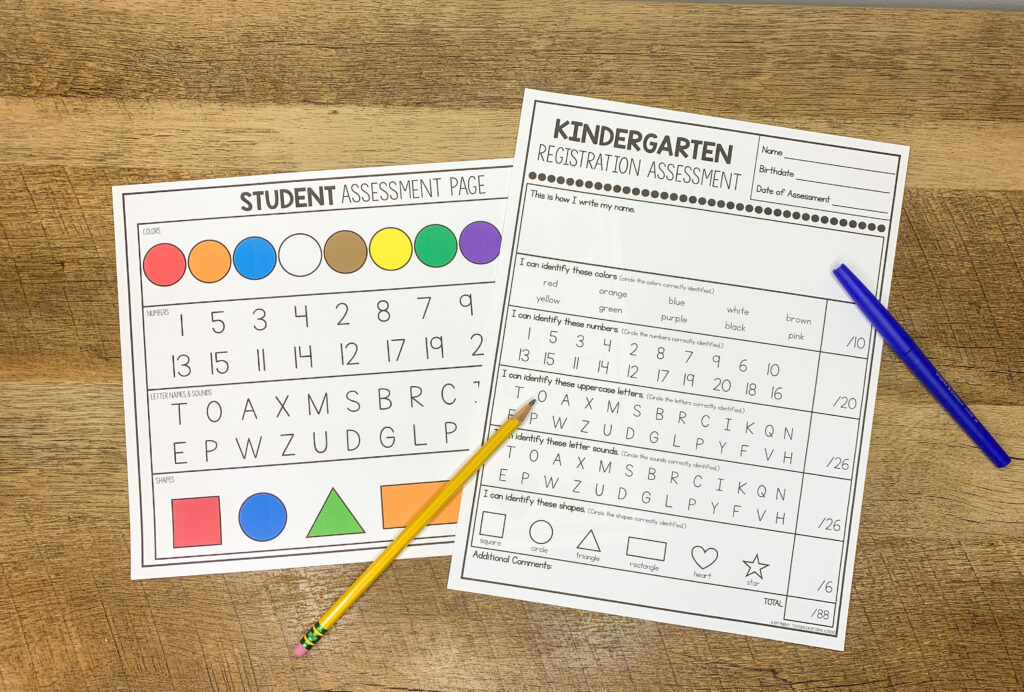
There is no such thing as a one-size-fits-all kindergarten readiness assessment! This is why I’ve created an editable kindergarten assessment screening tool. You’re able to change the assessment questions to align with your district requirements and curriculum.
Set the Stage
It might seem like a good idea to screen students in a completely empty room in order to limit distractions. However, a sterile environment like this can be intimidating. Find a balance between welcoming and distracting.
You will also want to consider if parents can sit in on the screening. Either way, it’s helpful to provide parents with something to do so that they aren’t tempted to coach during the assessment. You can give them a student questionnaire to fill out or a helpful flyer to read, like my free editable kindergarten readiness flyer!
Take Your Time
Some of these quietly-nervous kids are stepping inside a school for the very first time. Take a few minutes at the beginning of the assessment for students to use their voices for something other than the assessment. Have a selection of fidgets for them to use and ask them why they chose the one they did. Asking about t-shirt characters is always a hit! The goal is to get them to talk about something with no right or wrong answer. This gives them more confidence for the actual assessment.
In addition to helping students feel more comfortable, taking time for conversation also provides a great opportunity to gauge speech and language skills.
Be Prepared to Be Flexible
Remember: This is a screener, not a standardized test. The goal is for the children to show what they know, and sometimes that means making some accommodations on the fly. Be ready to pull out math manipulatives to help assess color identification. Consider asking students with expressive language difficulties to point to shapes instead of verbalizing the names.
Make note of any adjustments you made during the administration of the screener because this will be helpful information moving forward.
How to Use Kindergarten Screening Results
Once you have a stack of completed kindergarten readiness assessments, it’s time to put that information to good use! In addition to supporting individual students based on the results, there are two other important uses for kindergarten readiness assessments.
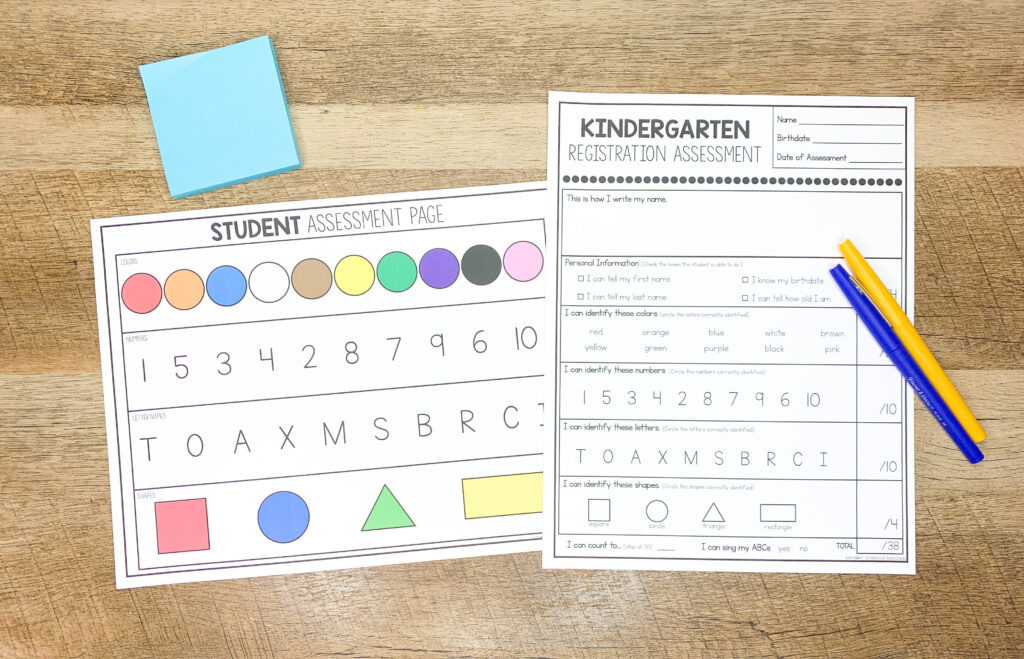
Classroom Placement
Every other grade level has a huge head start when it comes to creating balanced class lists each school year. The majority of the students have already been attending school in the district and their previous teachers can weigh in with classroom placement suggestions.
Kindergarten is a completely different story! Yes, it’s possible to receive reports and suggestions from Early Childhood Special Education and Head Start, but that is usually a small percentage of the incoming class. Kindergarten screening assessments provide a much-needed glimpse into a child’s behavior, communication, and academic skills. It’s important to use this information to create balanced classrooms where students can succeed.
Curriculum Planning
The kindergarten screening process might show you that you won’t be able to start “Day One” of the district’s ELA curriculum on day one of school. Sometimes it’s necessary to address readiness skills before starting on the set curriculum, particularly if the majority of the class has gaps. Kindergarten screening allows your team to make these informed curriculum planning decisions.
Kindergarten Screening Assessment
Are you ready to start planning for your new students? Grab a set of editable assessment screening tools! This set includes three different assessment screening options, with a teacher recording page and a corresponding student page for each option. It is also easy to adjust these assessments to best suit your needs. You can find this product in my Teaching Exceptional Kinders Shop or on Teachers Pay Teachers.
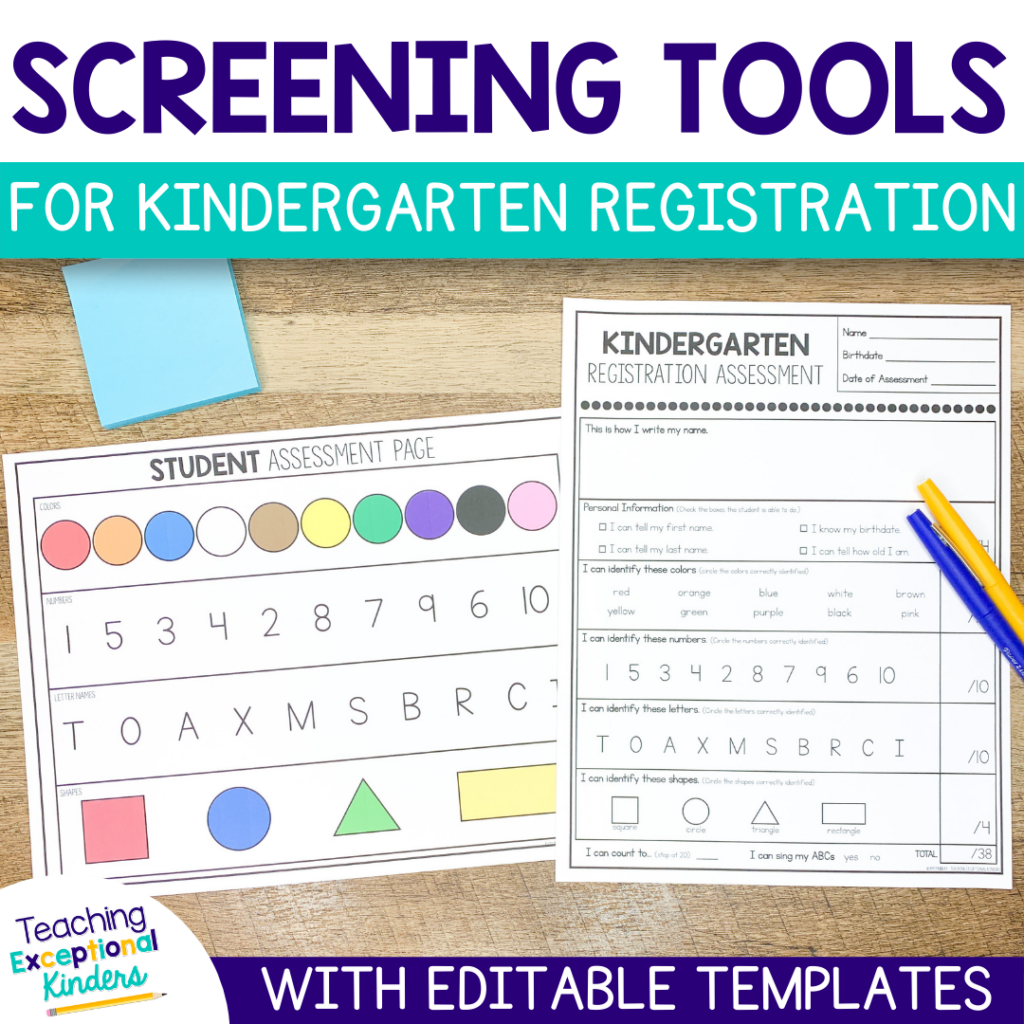
I hope that these kindergarten screening tips will help you gather important information about your future students. If you have any questions or tips to share, please leave them in the comments below!
Be sure to add this pin to your favorite teaching tips board on Pinterest! You'll be able to refer back to these tips when you're ready to plan your kindergarten round up or registration night!
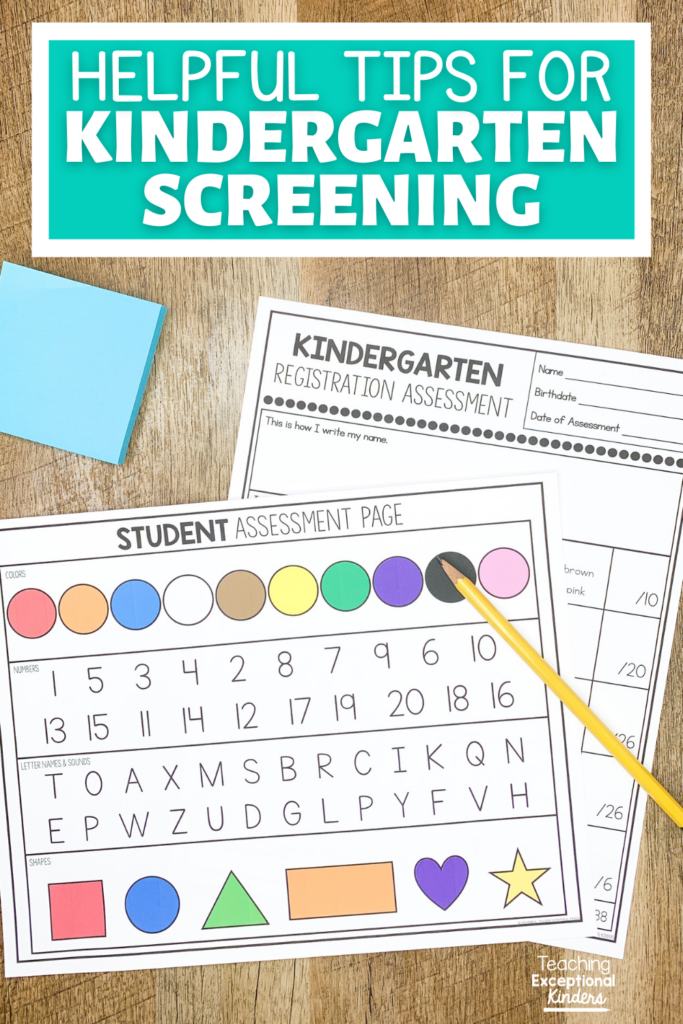
Amy
SITE DESIGN BY LAINE SUTHERLAND DESIGNS

